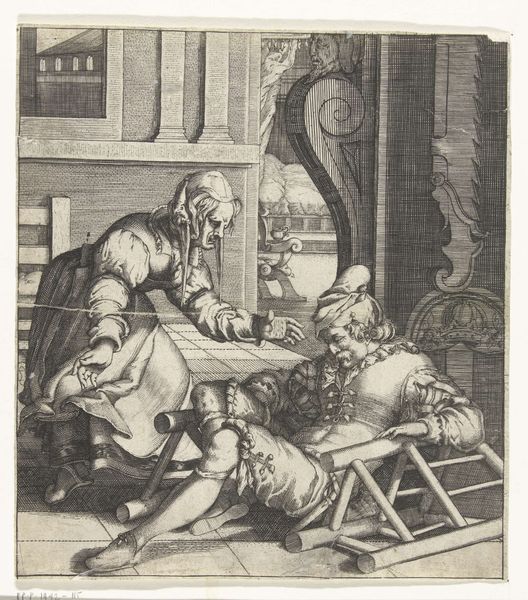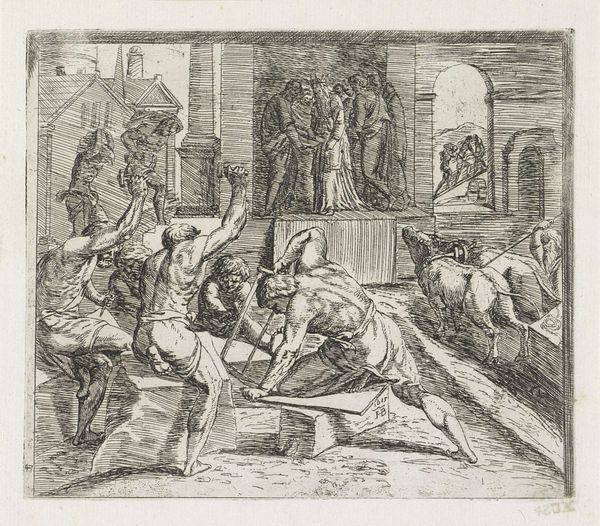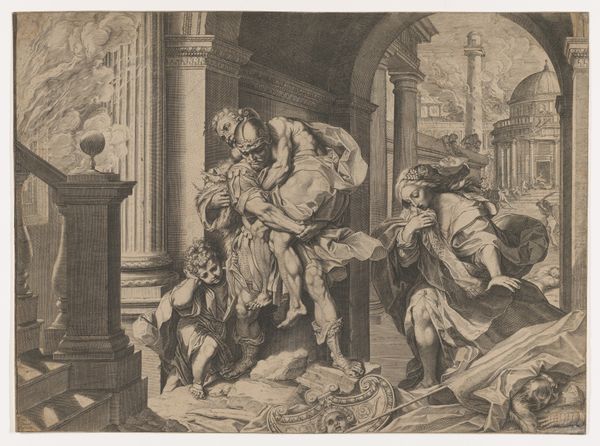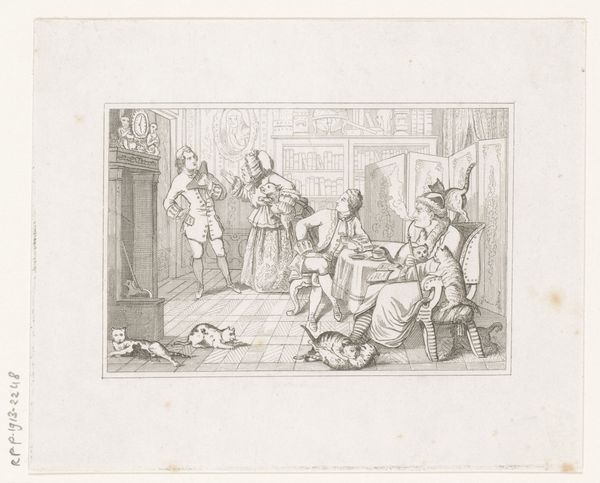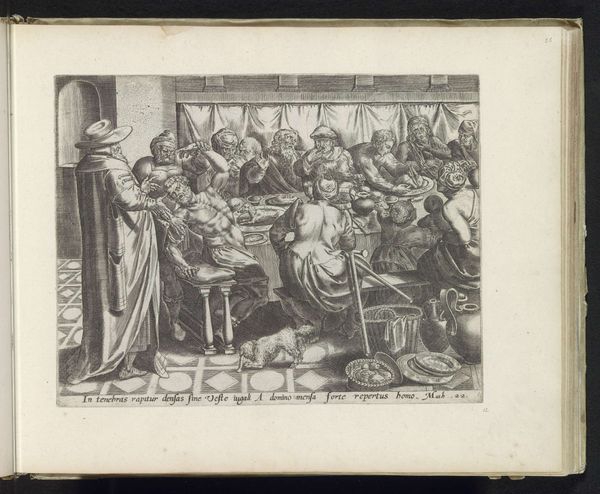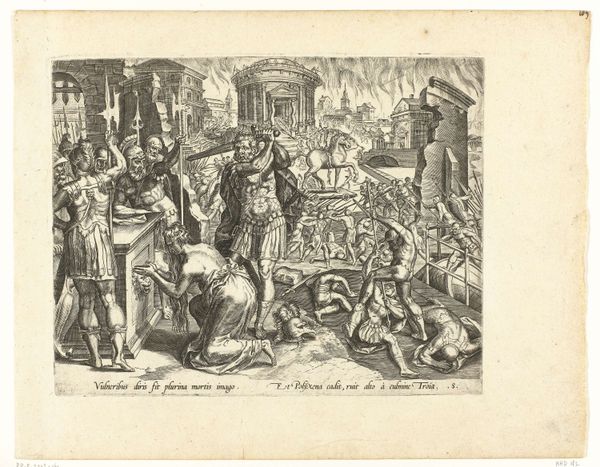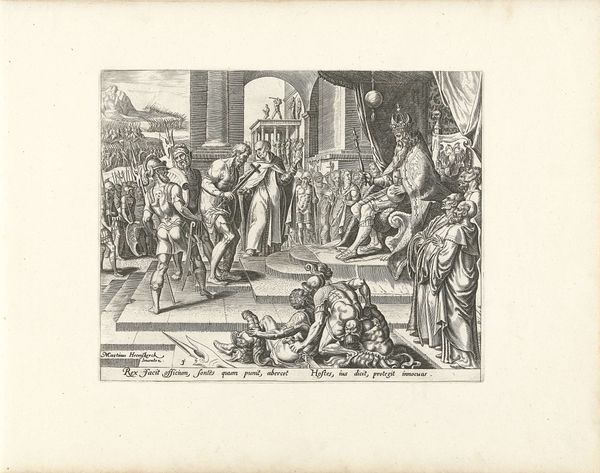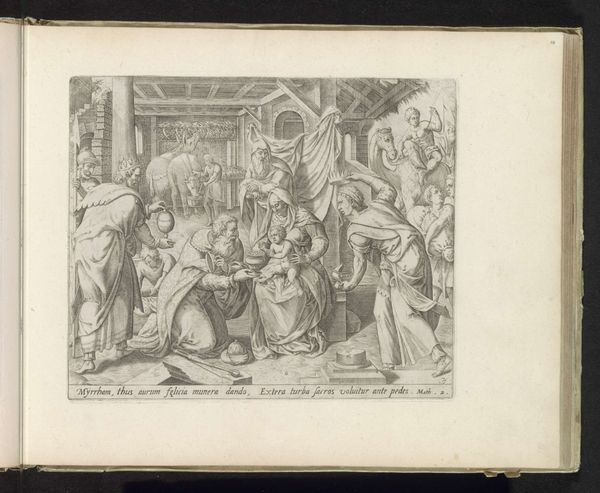
print, ink, engraving
#
ink drawing
#
narrative-art
#
baroque
# print
#
landscape
#
figuration
#
ink
#
history-painting
#
engraving
Dimensions: height 188 mm, width 228 mm
Copyright: Rijks Museum: Open Domain
Curator: Here at the Rijksmuseum, we have an engraving titled *Vlucht van Aeneas*, or "The Flight of Aeneas," dating from somewhere between 1636 and 1670, created in ink by an anonymous artist. It’s a dynamic, intricate print, what catches your eye first? Editor: The dramatic use of light and shadow. The deep blacks contrasting with stark whites really heightens the sense of urgency and chaos. The composition guides my eye right to the figures in the center. Curator: Indeed. Aeneas carrying his father Anchises and leading his son Ascanius out of burning Troy. The image is steeped in the mythology and cultural memory of the ancient world, the story embodying duty, lineage, and the resilience of a people facing destruction. Aeneas is almost literally carrying the weight of the past and the future on his shoulders. Editor: The architectural elements framing the scene also contribute to the tension, don't you think? Broken columns and collapsing structures mimic the fall of Troy itself, underscoring the precariousness of their escape. And consider the density of line work! Notice the chaotic jumble. Curator: Absolutely. The details of burning Troy are so vivid—it acts as a somber backdrop to the main figures. It highlights not just physical flight, but a cultural and historical transition as well. It represents a shift in power and the transplantation of civilization. Editor: And if we examine how the figures are rendered, notice the way Aeneas is positioned. There is such a muscular form, even in this smaller printed format, lending him a heroic stature, but also hints at the burden he carries. The engraving beautifully depicts not only historical narrative but also the complexity of familial and societal roles. Curator: It speaks to a larger history, resonating even now. It's amazing how much narrative and emotion is packed into this one piece of print work. Editor: Definitely food for thought – the weight of history, cleverly rendered through shadow and line.
Comments
No comments
Be the first to comment and join the conversation on the ultimate creative platform.
